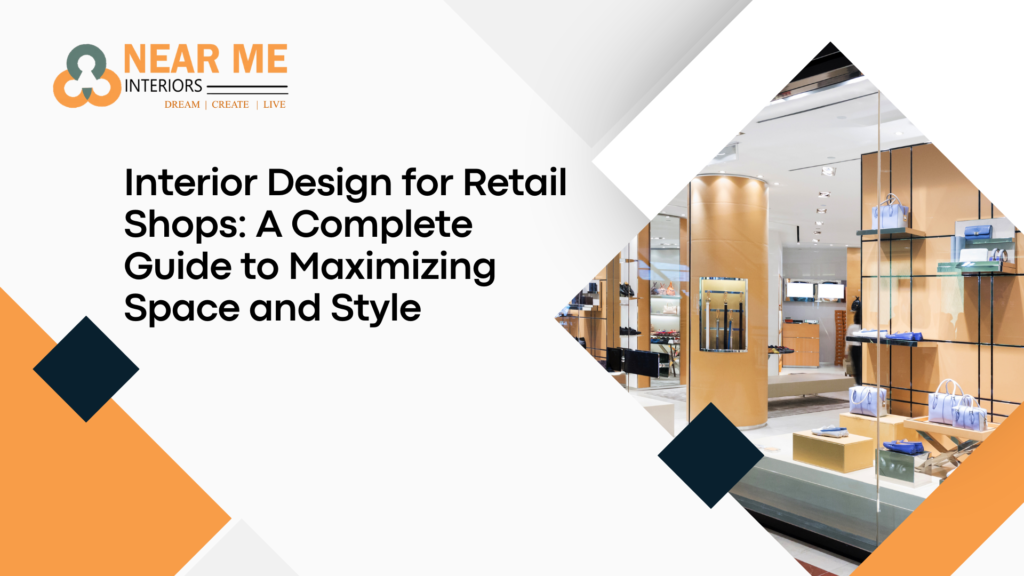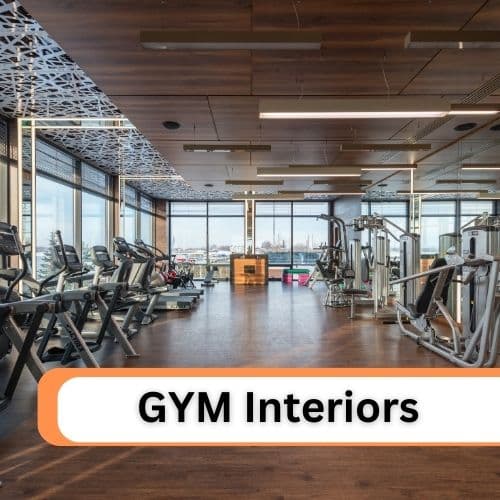In today’s competitive retail environment, interior design for retail shops plays a crucial role in attracting customers, enhancing their shopping experience, and boosting sales. An efficiently designed retail space can significantly impact customer behavior, making it an essential factor for retail success. Whether you are launching a new store or revamping an existing one, this guide will offer in-depth insights into crafting a retail space that reflects your brand, optimizes space usage, and encourages sales.
The Importance of Retail Shop Interior Design
The interior design of a retail shop is much more than just aesthetics; it’s about creating an environment that guides customer behavior, facilitates ease of movement, and enhances the overall shopping experience. A well-thought-out design combines visual appeal with functionality, ensuring that customers not only enjoy their visit but are also prompted to make purchases.





Enhancing Brand Identity Through Design
A retail shop’s interior design should reflect the brand’s identity. This includes using colors, materials, and textures that resonate with your brand message. For instance, luxury brands often use sleek, high-end materials like marble and glass to convey opulence, while eco-friendly brands may focus on sustainable materials and natural lighting.
Influencing Customer Behavior
Strategic interior design can direct customer flow and guide them toward high-margin products. Layout design, lighting, color schemes, and even background music all influence customer emotions and behaviors. Studies show that well-lit, organized spaces increase the time customers spend in a store, ultimately improving sales.
Key Elements of Effective Retail Shop Interior Design
A successful retail interior design requires a balance of functionality and aesthetic appeal. Below, we outline the essential elements that contribute to a well-designed retail space.
1. Store Layout
The layout of a retail store is the foundation of its design. There are various types of retail store layouts to choose from, depending on your store size, product offering, and target audience:
- Grid Layout: Best for stores with a large inventory, such as grocery stores, where customers can easily navigate aisles.
- Free-flow Layout: Ideal for boutiques and smaller retail spaces, offering a more relaxed and open feel.
- Loop Layout: Encourages customers to move through a circular path, ensuring they pass by most of your products.
The layout should facilitate ease of movement while encouraging customers to browse longer.
2. Lighting Design
Lighting plays a critical role in creating the right ambiance. Bright lighting works well in stores selling electronics or cosmetics, where customers need to examine products closely. Conversely, softer, warmer lighting may suit fashion boutiques, where the goal is to create a more relaxed atmosphere. Consider incorporating task lighting for product displays and ambient lighting for general illumination.
3. Product Displays
Effective product displays are key to grabbing customer attention. Use eye-catching display stands, lighting, and signage to highlight new arrivals, sales, or featured products. Product displays should be regularly updated to keep the space dynamic and engaging. Additionally, the placement of these displays should be in high-traffic areas of the store, such as near the entrance or along the main walkways.




4. Color Scheme
Color can significantly influence customer mood and behavior. For instance, warm colors like red and yellow can stimulate appetite and urgency, while cool colors like blue and green have a calming effect. Choose a color scheme that aligns with your brand and appeals to your target audience. Contrasting colors can be used to draw attention to key areas or products in the store.
5. Signage and Wayfinding
Clear signage is vital in helping customers navigate the store without feeling overwhelmed. Use bold, easy-to-read fonts and consistent color schemes that match your brand. Wayfinding signage, such as directional signs, should be placed strategically to guide customers through your store, especially in larger spaces.
6. Flooring and Materials
The flooring in a retail shop not only affects the visual appearance but also the overall durability and maintenance of the space. For high-traffic areas, consider materials that are durable and easy to clean, such as tile or polished concrete. Textured materials can be used to differentiate various areas within the store, such as carpet in lounging areas or wood for a more rustic, natural feel.
Designing for Customer Comfort and Experience
A crucial aspect of retail interior design is making sure customers feel comfortable and enjoy their shopping experience. Here are some specific ways to enhance customer comfort:
1. Creating Cozy Waiting Areas
Incorporating comfortable seating areas allows customers to take a break, encouraging them to spend more time in the store. Seating can be especially effective in larger retail spaces or near fitting rooms. These areas can also serve as social spaces where customers can share their shopping experiences.
2. Incorporating Technology
Integrating technology into your retail design can create a modern, interactive experience. Digital displays, interactive kiosks, and mobile checkout stations make shopping easier and more engaging. Many retailers are also using augmented reality (AR) to allow customers to visualize products in their own space, particularly in furniture or home décor stores.
3. Utilizing Natural Elements
Bringing in natural elements such as plants, water features, or natural lighting can make a space feel more inviting and relaxing. This biophilic design approach has been shown to reduce stress and improve mood, which can lead to increased sales and customer satisfaction.
- Best Cafe Interior Design in Lake Town Shree Bhumi
- Best Office Design Interior Design in Kolkata for Corporate & Startups
- ABID INTERIORS 2026 – Step Into a World Where Design Speaks: Redefines the Future of Interior Design
- Interior Shop Near Me: Where to Buy the Best Interior Materials
- Interior 3D Designers Near Me: Why 3D Visualization Is Essential Before Starting Any Project
Optimizing Retail Space for Maximum Efficiency
Maximizing the efficiency of your retail space is crucial, especially in smaller stores where every square foot matters. Here are a few strategies for optimizing space:
1. Vertical Space Utilization
If floor space is limited, consider using vertical displays to showcase products. Shelving that extends upwards or hanging products on walls can help maximize space while also creating an appealing visual experience. Vertical displays are especially useful for showcasing complementary items, encouraging customers to make additional purchases.
2. Multi-purpose Fixtures
Invest in versatile furniture and fixtures that can be easily reconfigured. For example, display tables that can be stacked or separated allow you to create different setups based on the season or current promotions. Flexibility in fixtures helps to keep the store layout dynamic, providing a fresh experience for returning customers.
3. Back-of-House Organization
A well-organized stockroom ensures that sales staff can quickly access inventory without disrupting the customer experience. Consider using modular shelving systems to maximize storage space and implement a clear organizational system for efficient stock management.

Conclusion: Designing a Space That Sells
A well-designed retail shop interior is more than just attractive—it’s a strategic tool for driving sales and enhancing the customer experience. By combining functionality with aesthetic appeal, thoughtful layout design, and targeted visual elements, retailers can create spaces that not only attract but also retain customers. From optimized lighting to effective product displays and the integration of technology, each design choice should align with your brand and customer expectations.






















